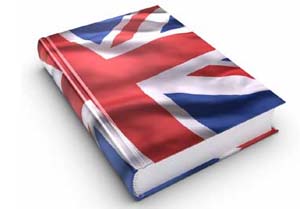 |
|
 |
|
| Visite: 1669 | Gradito: |
Leggi anche appunti:The puritansTHE PURITANS The puritans were people characterized by great religious and Political institutions in the united kingdomPOLITICAL INSTITUTIONS IN THE UNITED KINGDOM The United Kingdom is composed Drama in the Elizabethan AgeDrama in the Elizabethan Age: the prose and poetry of the Renaissance were intended |
 |
 |
THE VICTORIAN AGE
The Victorian Age (1837-1901) was a period of great industrial development, of extraordinary financial expansion, and of the creation of the immense British Empire.
Behind all these great events there was the enterprising Victorian middle class with its neopuritan ethic and the lower classes which were more and more exploited and poorer.
The period was also characterized by a rationalistic and utilitarian mentality as well as by philanthropic and social works.
The literature of the period took on two attitudes towards the time and its problems:
one was a reaction epitomized by the moral teachings of Carlyle and the social novels of Dickens
the other was a withdrawal into contemplation and concern with art and beauty - an attitude epitomized by the Pre-Raphaelite Movement Aestheticism and Decadence.
For further information click on the right corner
THE LETERATURE
The picture of Dorian Gray:
The Picture of Dorian Gray speak about english gay and his friends. The name of his gay is Dorian Gray.
This story have same shange because it is around about on the picture of Dorian Gray.
The main capter in this book is the capter two, when Dorian wasn't owere of his own beauty, he was express one wish about if he to be always young, and the picture was to grow old.
In my opinion this book is very intersting, expecialy, the Lord Harry's worlds, because he express strange opinion about the life, the woman, the people, his speecks is very psicology.
I like it.
Lord Henry's compliments
influence Dorian in negative way.
Why?
They focused on the brevity of youth and the importance of beauty.
Why?
Dorian for the first time in his life realized / become awere of how
handsame he is
Why?
He saw himself in the potrait mirrows
Why?
The portrait was a wanderful work of art and it highlighted Dorian physical beauty which is connected to his moral beauty
The picture of Dorian Gray (The preface):
The preface explains important elements of Wilde.
ABOUT:
Art: Art's aim is to greate - It his no moral aim
Greate: Beauty / Morality --> There aren't moral or immoral
Morality: The moral life of man is the topic / the object / material of artist.
Morality of Artist: consist in using an inperfect medium (language) in a perfect way.
THE REFORM BILLS: With the First Reform Bill, middle class males were given the vote which, in time, led to the establishment of middle class dominance in politics.
The widespread poverty of the lower classes, due to the economic recession of the 1840s and the increasing unemployment brought about by the mechanisation of the workplace, resulted in deep discontent.
As result of the Reform Bill which excluded the working classes from political tights, there arose a working class political movement - The Chartists, so called as they grew up the People's Charter (1838) calling for all men.
Social reforms were in fact faced as a new social conoscience gradually took root. It resulted in the Second Reform Bill (1867) which this time gave working class men resident in towns the right to vote.
THE VICTORIAN MIDDLE CLASS: Notwithstading the serious social problems the country grew in wealth, influence, prestige and power.
Free Trade brought prosperity to the cotton and wool industries;
London established itself has a world centre of finance and shipping and extended her boundaries to the suburbs through the massive construction of Victorian houses;
the invention of the steam engine resulted in the creation of a nationwide network of railways;
Britain became the world's greatest colonial power.
THE VICTORIAM ETHOS: The Victorian middle classes were confident,complaceny and self-satisfied. Their ethos, based on a renewed Puritan spirit, was one of moral rectitude, hard work, individualism and self-help.
Society was self-confident and self-satisfied and the highly individualistic and materialistic Victorian, convinced of its righteousness, exploited the poor masses in the name of this ethos.
As a reaction against this, in the second half of the Victorian Age, the lower classes joined in concerted effort to fight for their rights.
Robert Owen set up The National Association for the Protection of Labour in 1830. This collapsed and was soon followed in 1834 by the Grand National Consolidated Trades Union that fought for shorter hours of work and higher wages.
The strikes that ansued led to repression and the Grand National collapsed also. Another movement, Chartism, attempted to achieve the same aim of reform through the indirect method of great representation and franchisment. Although the movement collapsed in 1848, its work contributed to the Reform Bills of 1832 and 1867 that extended the political rights of the workers.
This newly gained political strenght gave impetus to the trade union movement, whereby organisations of workers where created to fight for better working and pay conditions. Unions were founded to represent separate categories of skilled workers and in 1848 the Trade Union Congres was founded.
The move towards mutual supportive action was apparent in another movement which had far-reaching effects:
|
It was started by a group of Chartists and followers of Robert who, in 1844 opened in a store in the north of England. |
Goods were sold at marked prices and profits were divided among the members on the basis of what they had bought. This example was greatly followed and throught it the poorer classes learnt self-government and how to manage business.
INDUSTRIAL AND SOCIAL PROGRESS: By the 1850s England was refered to as the 'Work Shop of the World' and her grandeur in the fields of scientific, technical and industrial development was exhibited for all to see at the Greeat Exhibition At Crystal Palace in 1851.
As time progressed England's prosperity continued to encrease. Free trade was established whereby no taxes were levied on imported or exported goods. This led to encreased production and greater profits.
Even the little things in life were being improved. Gas and oil were being substituted by electricity. There was more clothing, food and furniture the photograph was invented and this allowed the lower class to keep a 'portrait' of their loved ones who were far away in other regions or other countries.
The Penny Post was a revolution, for it meant that for the first time over at minimum cost people could keep in touch with each other. The Penny Post came at a time when this need was being greatly felt also due to the phenomenon of internal and overseas emigration.This had brought about a break up of the family nucleus and the uprooting of whole communities.
Finnally holidays at the seaside became more and more frequent on account of the railway which had been made possible by the pioneering work of George Stephenson.
THE VICTORIAM ETHOS: The Victorian middle classes were confident,complaceny and self-satisfied. Their ethos, based on a renewed Puritan spirit, was one of moral rectitude, hard work, individualism and self-help.
Society was self-confident and self-satisfied and the highly individualistic and materialistic Victorian, convinced of its righteousness, exploited the poor masses in the name of this ethos.
As a reaction against this, in the second half of the Victorian Age, the lower classes joined in concerted effort to fight for their rights.
Robert Owen set up The National Association for the Protection of Labour in 1830. This collapsed and was soon followed in 1834 by the Grand National Consolidated Trades Union that fought for shorter hours of work and higher wages.
The strikes that ansued led to repression and the Grand National collapsed also. Another movement, Chartism, attempted to achieve the same aim of reform through the indirect method of great representation and franchisment. Although the movement collapsed in 1848, its work contributed to the Reform Bills of 1832 and 1867 that extended the political rights of the workers.
This newly gained political strenght gave impetus to the trade union movement, whereby organisations of workers where created to fight for better working and pay conditions. Unions were founded to represent separate categories of skilled workers and in 1848 the Trade Union Congres was founded.
The move towards mutual supportive action was apparent in another movement which had far-reaching effects:
|
It was started by a group of Chartists and followers of Robert who, in 1844 opened in a store in the north of England. |
Goods were sold at marked prices and profits were divided among the members on the basis of what they had bought. This example was greatly followed and throught it the poorer classes learnt self-government and how to manage business.
VICTORIAN SUPPORT FOR REFORMS: The need for democratic social reforms gradually made itself felt as the century progressed. But resistance was strong as it implied an overhaul middle class interests. The disinterest shown was justfied through the political philosophy of the socalled 'laissez faire' whereby the government adopted the priciple of non-interference in business, finance or the conditions of the people's lives.
 |
| Appunti su: |
|
| Appunti Francese |  |
| Tesine Tedesco |  |
| Lezioni Spagnolo |  |